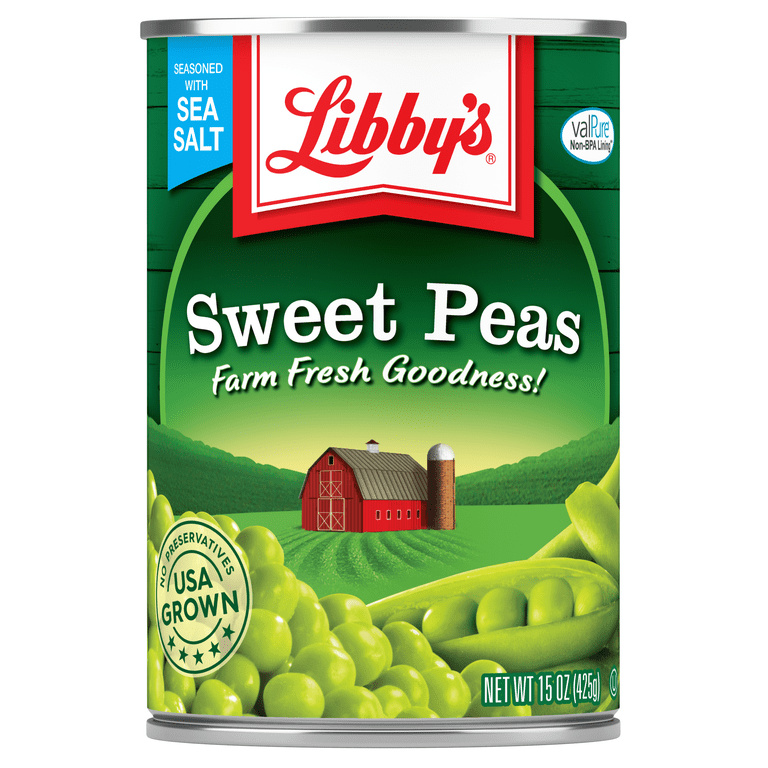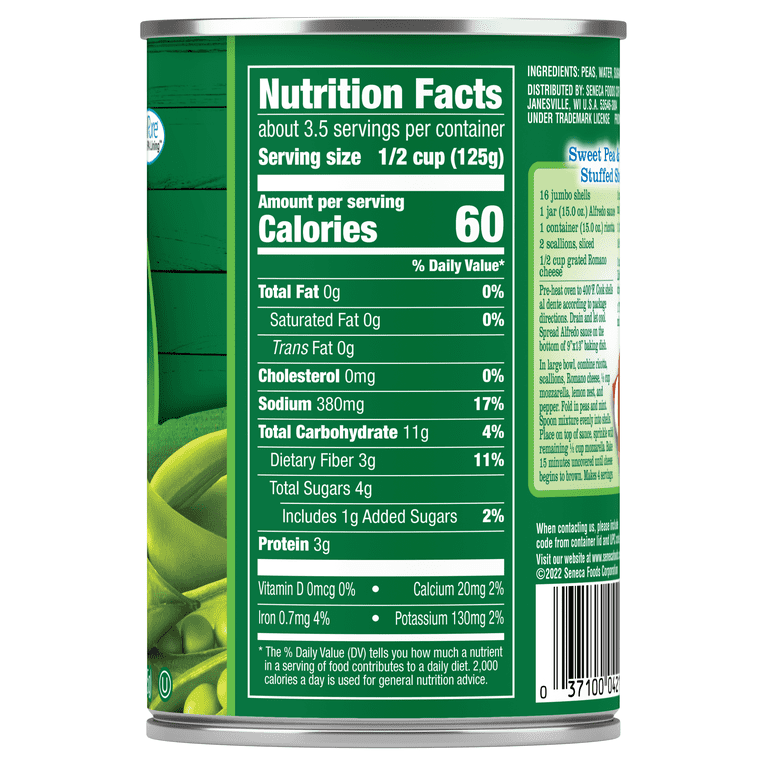I have the impression that the cans of food in the US list the quantity by weight. Unfortunately, I can't really tell, since they usually say how many ounces. But, are those fluid ounces or avoirdupois ounces? It's easy to figure out in Canada, the quantities are listed in millilitres and sometimes in litres. But, when a US recipe calls for a 15 ounce can of beans, is that nearly a pound or is it nearly a pint?
You are using an out of date browser. It may not display this or other websites correctly.
You should upgrade or use an alternative browser.
You should upgrade or use an alternative browser.
Question about US cans of food
- Thread starter taxlady
- Start date
The friendliest place on the web for anyone that enjoys cooking.
If you have answers, please help by responding to the unanswered posts.
If you have answers, please help by responding to the unanswered posts.
Not sure I understand your question, taxy.
To me, can that holds 15 ounces, they mean the contents. If they are in a liquid, don't the recipes usually specify to drain or rinse? And so that is what I use.
The only cans I've ever seen that specify dry and wet are tuna.
They'll say 170 g net wt / 120 g drained.
To me, can that holds 15 ounces, they mean the contents. If they are in a liquid, don't the recipes usually specify to drain or rinse? And so that is what I use.
The only cans I've ever seen that specify dry and wet are tuna.
They'll say 170 g net wt / 120 g drained.
Aunt Bea
Master Chef
For me it’s both until I drain the liquid from things like canned vegetables.

Are those fluid ounces or weight ounces. They are not the same for everything. I'm not even considering whether or not the contents are drained. I assume that a US can of beans or whatever has the same proportion of liquid to solid that the Canadian cans do.Not sure I understand your question, taxy.
To me, can that holds 15 ounces, they mean the contents. If they are in a liquid, don't the recipes usually specify to drain or rinse? And so that is what I use.
The only cans I've ever seen that specify dry and wet are tuna.
They'll say 170 g net wt / 120 g drained.
OK, light bulb went on. I usually hunt around and find a can that gives both g and oz. and better yet if there is a video of the recipe and you can see the cans they are using.
Plus I fully agree when it comes to baking.... and they ask for 100 g of water and 100 g of flour. So which is it? Arghhhh
I usually just end up not making the recipe.
Plus I fully agree when it comes to baking.... and they ask for 100 g of water and 100 g of flour. So which is it? Arghhhh
I usually just end up not making the recipe.
GinnyPNW
Master Chef
Yep, the weights and measurements can be confusing. Like, a "cup" is 8 ounces, except when you are talking about shredded cheese, then a "cup" is only 4 ounces. 
Maybe someone in the US can measure the volume of an empty can and tell me how much it is and how many ounces it said on the can?
But, when a US recipe calls for a 15 ounce can of beans, is that nearly a pound or is it nearly a pint?
If a recipe calls for a 15 oz can of beans, I use a 15 oz can of beans. I'm not sure what the problem is?
CD
Yep, the weights and measurements can be confusing. Like, a "cup" is 8 ounces, except when you are talking about shredded cheese, then a "cup" is only 4 ounces.
Again, if the recipe calls for a cup of liquid, don't worry about the ounces. Use a liquid measuring cup to measure out a cup of liquid. If you need a cup of shredded cheese, use a measuring cup for solids to measure out a cup of shredded cheese.
CD
The only cans I've ever seen that specify dry and wet are tuna.
They'll say net 170 g net wt / 120 g drained.
Do you have a specific food in mind? Could you name/example one? You are specifically talking about cans, no?Are those fluid ounces or weight ounces. They are not the same for everything. I'm not even considering whether or not the contents are drained. I assume that a US can of beans or whatever has the same proportion of liquid to solid that the Canadian cans do.
I have in front of me 3 cans of tomatoes. One crushed, and 2 sauces, 3 different weights. (these are "no name"
Large can of Crushed tomatoes is labeled 796ml/28 fl oz.
Next 2 sizes are
680 ml
396 ml
Now they are not saying fluid oz because they are a "sauce"
LOL, they don't even say were they are from other than Loblaws. So I will innocently assume they are sourced Canadian!
GinnyPNW
Master Chef
Generally, I just weigh stuff. And for cheese, I cut off what looks to be about 4 ounces, verify on a scale and then shred it. I have a wonderful kitchen scale that allows for a variety of weights... (g, ml, lb./oz., fl. oz.). When accuracy counts, I opt for weight measurements.Again, if the recipe calls for a cup of liquid, don't worry about the ounces. Use a liquid measuring cup to measure out a cup of liquid. If you need a cup of shredded cheese, use a measuring cup for solids to measure out a cup of shredded cheese.
CD
Generally, I just weigh stuff. And for cheese, I cut off what looks to be about 4 ounces, verify on a scale and then shred it. I have a wonderful kitchen scale that allows for a variety of weights... (g, ml, lb./oz., fl. oz.). When accuracy counts, I opt for weight measurements.
If I have a recipe that is in grams and milliliters, I use those measures, and have zero difficulty with it. If the recipe calls for cups and ounces, I can deal with that, too. I just do what the recipe tells me to do. I'm thinking that if a recipe calls for a 15 ounce can of beans, it is referring to a can of beans that says "15 ounces" on the label.
Is the real point of this tread point out how US weights and measures are stupid? That seems to be a trend, lately.
CD
Aunt Bea
Master Chef
I’m still not sure that I understand the concern.
Maybe that’s because my brain works in cups and not in grams or milliliters.
It’s true that a one pound can of vegetables canned in liquid will contain fewer vegetables than a similar one pound bag of vegetables frozen without liquid.
It’s also true that a one pound can of coffee will be larger than a one pound can of vegetables.
This is a typical can of vegetables.
Net wt. 15 oz. (425g)on the front of the label.
Serving size in cups and grams on the nutrition panel.


Maybe that’s because my brain works in cups and not in grams or milliliters.
It’s true that a one pound can of vegetables canned in liquid will contain fewer vegetables than a similar one pound bag of vegetables frozen without liquid.
It’s also true that a one pound can of coffee will be larger than a one pound can of vegetables.
This is a typical can of vegetables.
Net wt. 15 oz. (425g)on the front of the label.
Serving size in cups and grams on the nutrition panel.


Andy M.
Certified Pretend Chef
Typically, weight is listed as OZ and volume is listed as FL OZ for fluid ounces.
LOL.... in the good ol' US of A!Typically, weight is listed as OZ and volume is listed as FL OZ for fluid ounces.
I’m still not sure that I understand the concern.
Maybe that’s because my brain works in cups and not in grams or milliliters.
It’s true that a one pound can of vegetables canned in liquid will contain fewer vegetables than a similar one pound bag of vegetables frozen without liquid.
It’s also true that a one pound can of coffee will be larger than a one pound can of vegetables.
This is a typical can of vegetables.
Net wt. 15 oz. (425g)on the front of the label.
Serving size in cups and grams on the nutrition panel.


That can also says "NT WT 15 OZ (425g)" The WT stands for Weight, and the NT stands for Net, which means the weight of the contents without the can.
CD
LOL.... in the good ol' US of A!
Yep, but the label also says 425g, which is metric, and is a weight measurement, not liquid. But, I get the point. Archaic US measurements shouldn't be on the label at all. It should be metric only.
CD
Andy M.
Certified Pretend Chef
YES!Yep, but the label also says 425g, which is metric, and is a weight measurement, not liquid. But, I get the point. Archaic US measurements shouldn't be on the label at all. It should be metric only.
CD
Andy M.
Certified Pretend Chef
The 8 ounces of a liquid in a cup is fluid ounces which is a measure of volume.Yep, the weights and measurements can be confusing. Like, a "cup" is 8 ounces, except when you are talking about shredded cheese, then a "cup" is only 4 ounces.
The 4 ounces of shredded cheese is a measure of weight which will fill a 1 cup measure if you don't pack it down or fluff it up too much.
blissful
Master Chef
- Joined
- Mar 25, 2008
- Messages
- 6,361
"contents without the can"That can also says "NT WT 15 OZ (425g)" The WT stands for Weight, and the NT stands for Net, which means the weight of the contents without the can.
CD
If it is green beans, I thought net weight was the beans without the can or the water. Is that correct? Or have I had it wrong my whole life?
Similar threads
- Replies
- 30
- Views
- 4K
- Replies
- 2
- Views
- 555
